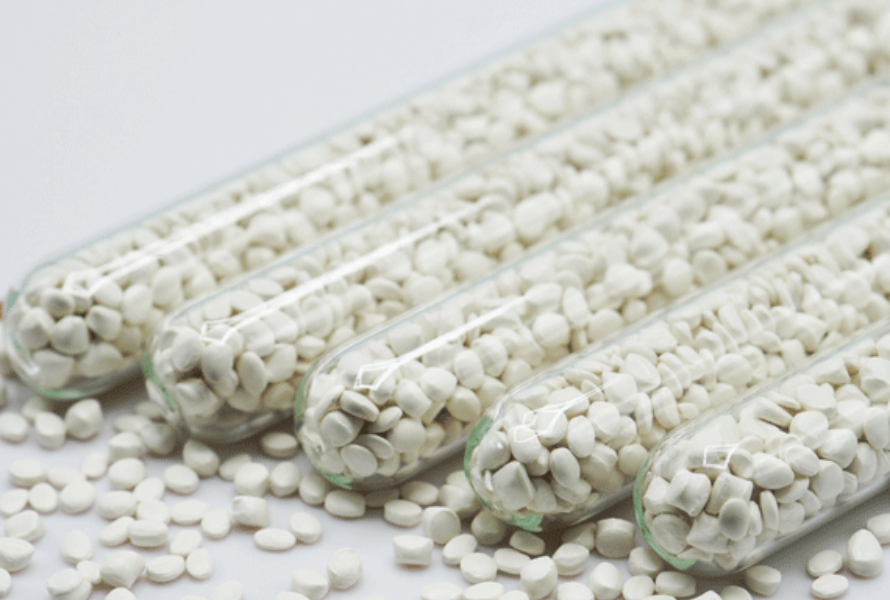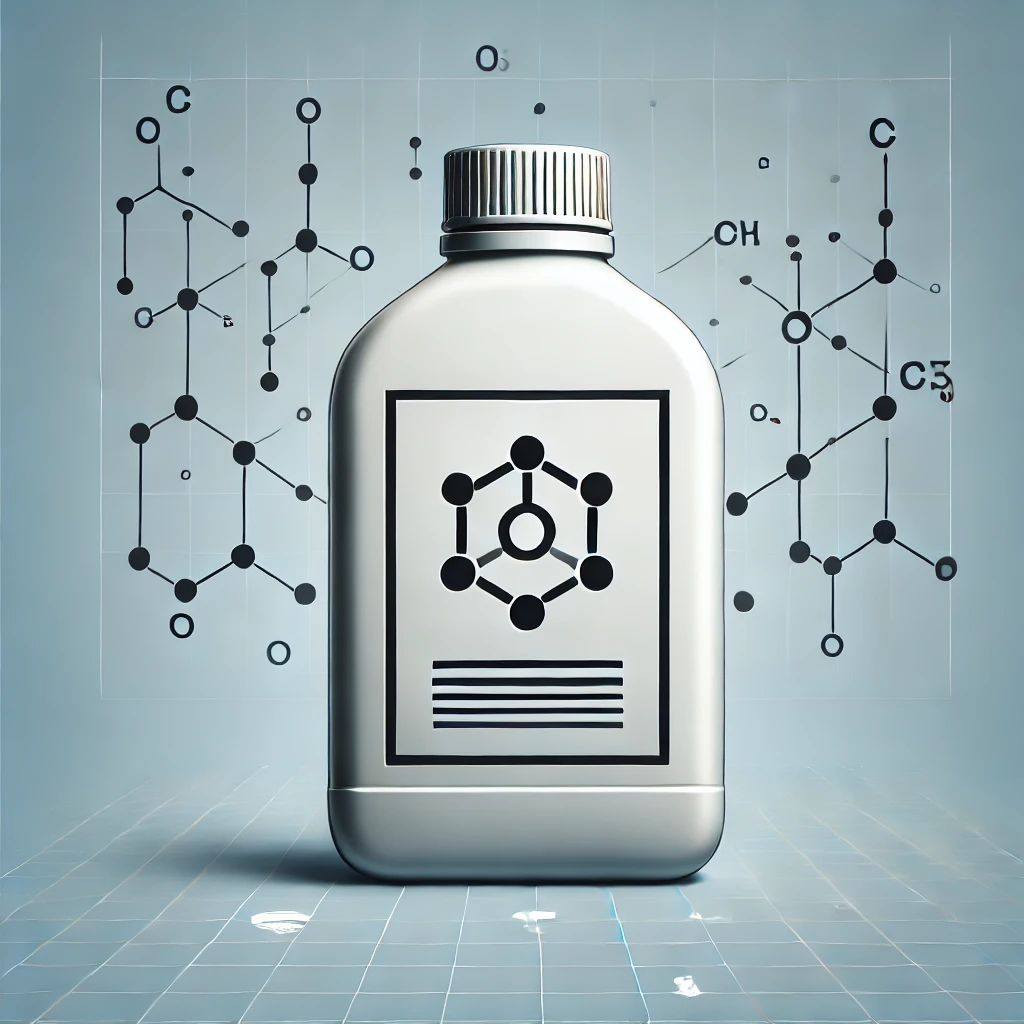Engineering compounds
Polypropylene
Properties of Polypropylene compounds
Polypropylene (PP) compounds exhibit a unique combination of chemical, mechanical, and thermal properties that make them highly versatile across various industries. Structurally, PP is similar to polyethylene, particularly in terms of electrical behavior and solution characteristics. However, the presence of methyl groups on the polymer chain enhances its mechanical strength and thermal resistance, although this comes with a slight reduction in chemical resistance.
Mechanically, polypropylene is recognized for its low density, ranging between 0.895 and 0.93 g/cm³, making it the lightest of all commodity plastics. This characteristic allows for the production of lightweight molded parts with cost efficiency. The material offers a Young’s modulus in the range of 1300–1800 N/mm², providing a good balance between stiffness and flexibility. PP is particularly tough and flexible when copolymerized with ethylene, enabling its use in engineering applications where durability and formability are essential. Additionally, polypropylene shows excellent resistance to fatigue, maintaining structural integrity under repeated stress.
Thermally, isotactic polypropylene has a melting point between 160–166°C, while perfectly isotactic forms can melt at around 171°C. Below 0°C, however, PP tends to become brittle. Despite this, its thermal expansion is less than that of polyethylene, providing better dimensional stability under heat.
Chemically, polypropylene is resistant to most fats, organic solvents, acids, and bases at room temperature. It dissolves in certain nonpolar solvents at high temperatures and has reduced resistance to strong oxidizing agents. The melt flow rate (MFR) is a key processing property that affects how easily PP flows during molding; however, higher MFR values can reduce impact strength.
| Property | Description |
|---|---|
| Density | 0.895 – 0.93 g/cm³ (lowest among commodity plastics) |
| Young’s Modulus | 1300 – 1800 N/mm² |
| Melting Point | 160 – 171°C (depending on isotacticity) |
| Brittleness Temperature | Becomes brittle below 0°C |
What are Polypropylene compounds typically used for?
Packaging:
Polypropylene (PP) compounds are extensively used in packaging due to their excellent balance of strength, low cost, and moisture barrier properties. They are ideal for a variety of packaging solutions such as food packaging films, containers, and shrink wraps. Their moisture resistance and chemical inertness make them suitable for electronic and graphic films, as well as disposable closures like diaper tabs. Additionally, cast and biaxially oriented polypropylene (BOPP) films are widely used for their superior clarity, strength, and moisture barrier characteristics, making PP a preferred choice in both consumer and industrial packaging.
Consumer Goods:
PP compounds find broad application in manufacturing consumer goods. Transparent containers, household appliances, toys, suitcases, and furniture components are commonly made from PP due to its lightweight nature and mechanical durability. Its ability to be easily molded and its aesthetic flexibility allow manufacturers to produce various shapes and designs, meeting consumer demands for functional and visually appealing products.
Automotive Industry:
In the automotive sector, polypropylene compounds are vital because of their cost-effectiveness, moldability, and mechanical performance. PP is used to manufacture components such as bumpers, fender liners, battery casings, door trims, and interior panels. The polymer's low thermal expansion, lightweight nature, and excellent chemical and weather resistance make it ideal for automotive applications requiring durability and resistance to harsh environments. Moreover, PP provides a good balance between impact resistance and stiffness, which is crucial for vehicle safety and performance.
Fibers and Fabrics:
Polypropylene plays a dominant role in the production of fibers and fabrics. Nonwoven and woven fabrics made from PP include ropes, tapes, spunbond, and meltblown fabrics. These fibers are widely used in industrial and marine environments due to their excellent strength, chemical resistance, and durability. PP fibers also find applications in textile manufacturing for specialized uses where moisture resistance and low weight are important.
Medical Applications:
Medical-grade polypropylene compounds are used extensively because of their biocompatibility, chemical resistance, and sterilization capability. PP is the material of choice for disposable syringes, petri dishes, lab containers, intravenous (IV) bottles, medical vials, and food-grade trays. Its inert nature ensures safety in medical environments, while its ease of molding allows for mass production of reliable, sterile medical products.
Industrial Uses:
In industrial settings, polypropylene sheets and molded components are used to produce chemical tanks, industrial pipes, returnable transport packaging (RTP), and liners resistant to corrosive substances. PP’s chemical resistance and durability ensure longevity and reliability in harsh industrial environments, making it suitable for applications where exposure to acids, bases, or solvents is common.
Biaxially Oriented Polypropylene (BOPP) Films:
BOPP films are a specialized class of polypropylene products stretched biaxially to enhance mechanical properties. These films offer improved strength, clarity, tear resistance, gloss, and moisture barrier properties. Their dimensional stability and versatility make them suitable for high-performance packaging applications, especially in the food and consumer goods industries where visual appeal and product protection are critical.
Polyamide
Engineering compounds are a type of plastic that, when combined with special additives such as glass fibers, minerals, and other reinforcements, enhance their properties. These compounds are used in the production of various plastic products and are widely chosen in numerous industries due to their high strength, resistance to heat and chemicals, extended lifespan, and excellent moldability.
Engineering compounds can be specifically designed for particular applications and environments, providing better performance than regular plastics.
Introduction to Engineering Compounds
Engineering compounds refer to plastics that are reinforced with specific additives such as glass fibers, minerals, and other strengthening agents. These plastics are typically produced using polymers like polyethylene and polypropylene as a base and can be made from either virgin or recycled materials. The composition of these plastics is carefully formulated to ensure product quality and performance.
During manufacturing, engineering compounds incorporate compatibilizers to address defects and enhance product functionality. As a result, these compounds outperform conventional plastics and have gained popularity across various industries. Engineering compounds can also serve as an alternative to masterbatches, leading to more cost-effective production.
Due to the inclusion of mineral additives, these plastics contribute to environmental sustainability by reducing ecological damage. They are widely used in the automotive, piping and fittings, electrical appliances, and household industries. In the automotive sector, for instance, engineering compounds are utilized to manufacture durable and safe plastic components.
Plastic pipes made from engineering compounds offer advantages over metal pipes, such as improved water flow and reduced iron-related contamination. In the electrical industry, these compounds are used for wire insulation and casing. Similarly, in household appliances, they help create lightweight yet durable components.
Advantages of Using Engineering Compounds
Engineering compounds come in various types, each offering unique properties tailored to specific manufacturing challenges. Incorporating these compounds in plastic production enhances quality, minimizes defects, and optimizes the final product. These plastic components are customized to meet the specific demands of each industry, delivering superior performance and distinctive characteristics.
Some key benefits of using engineering compounds in various industries include:
-
Increased heat resistance
-
Enhanced tensile strength
-
Reduced wear and scratches
-
Improved chemical resistance
-
Dimensional stability
-
Retained flexibility and moldability
-
Longer lifespan compared to conventional plastics
-
Reduced production time and costs
Engineering compounds belong to the broader category of polymer compounds. In situations where masterbatches are unsuitable, engineering compounds offer an effective alternative by significantly improving product properties. Additionally, their use lowers production costs and streamlines manufacturing processes.
Types of Engineering Compounds
These plastics are available in various forms, tailored to industry-specific requirements. Some common types include:
-
Polyethylene-based engineering compounds
-
Polypropylene-based engineering compounds
-
Glass fiber- or mineral-reinforced engineering compounds
These compounds are specially developed for specific applications, ensuring the best possible performance for each product.
Final Thoughts
For high-quality engineering compounds, Bespaar Dovam Shimi is one of the most reputable manufacturers and suppliers. This company offers various engineering compounds, including polyethylene, polypropylene, and glass fiber-reinforced compounds, making it a reliable choice for multiple industries. By purchasing from this company, you can access high-quality products at competitive prices, ensuring optimal production results.
Frequently Asked Questions
What is an engineering compound?
An engineering compound is a type of plastic that is enhanced with reinforcing materials such as glass fibers and minerals to improve its properties. These compounds are designed for specific applications and provide superior performance compared to regular plastics.
What are the applications of engineering compounds?
Engineering compounds are used in industries such as automotive, piping and fittings, electrical appliances, and household products. Due to their high durability, extended lifespan, and flexibility, they serve as an ideal choice for these sectors.
Can engineering compounds be made from recycled materials?
Yes, these compounds can be manufactured using either virgin or recycled materials. Using recycled materials helps reduce costs and promotes environmental sustainability in the production process.
Why use engineering compounds instead of masterbatches?
Engineering compounds can be an excellent alternative to masterbatches in plastic production. They are particularly useful when masterbatch-polymer blending is not feasible, as they enhance product quality while reducing production costs.


